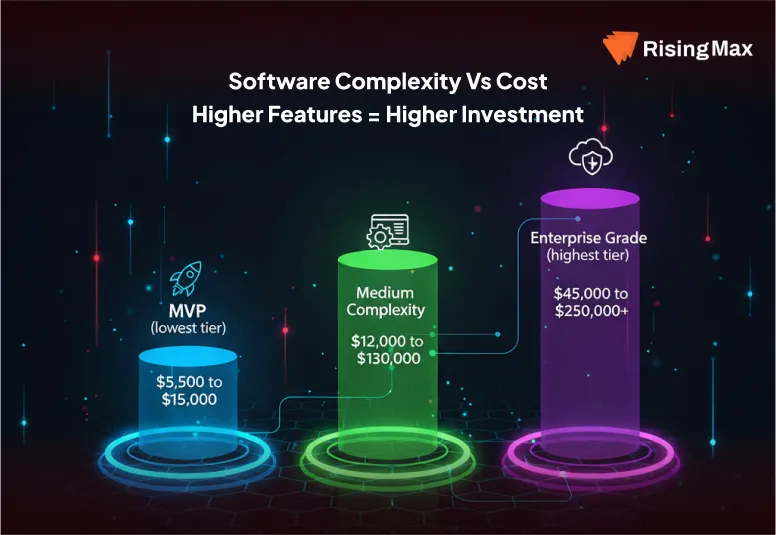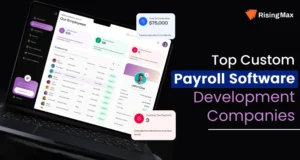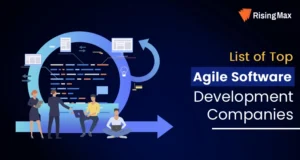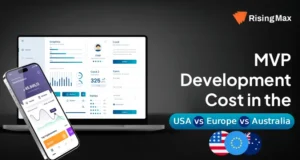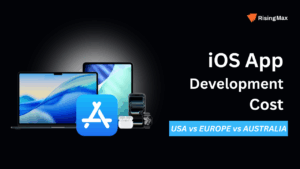Key Takeaways:
- Cost to develop custom software ranges between USD 7,000 and USD 250,000+, with regional cost variations of up upto 50-70%.
- Enterprise-grade software that includes AI, multi-platform support, or regulatory compliance (HIPAA, GDPR, PCI DSS) can inflate costs by 2–3x compared to MVPs or internal tools.
- In 2026, Agentic AI supporting automated workflows and multi-agent systems is expected to reduce development time by 30–50%, but also raise upfront costs due to high expertise and infrastructure requirements.
- Combining agile development (Scrum or Kanban), adopting CI/CD pipelines, and using planned sprint backlogs can reduce total development expenses and timeline by up to 40% without sacrificing quality.
The growing demand for flexible workspaces and the need for real-time data analysis have led to a significant increase in the software development market. Custom software provides excellent flexibility when it comes to developing or integrating features of your choice. You can even build every little thing as per your business needs.
For tech buffs, think of it as installing Arch Linux and then ricing the entire OS to your preferences. Sounds fantastic, doesn’t it? But how much does it cost to build one?
Typically, the custom software development cost ranges from USD 7,000 to USD 250,000+, depending on various factors such as software user-base, type, feature complexity, industry to be used in, development tech stack, and diversity in services it aims to provide.
In this custom software development 2025/26 cost comparative guide, we will cover –
- Custom vs Off-the-Shelf Software
- Understanding the Build of Software
- What Makes Software Development Expensive
- Custom Software Development Cost in USA vs Europe vs Australia
By the end of this article, you will be able to find answers to trivial questions such as –
- Should I hire a freelancer or an agency for my custom software development?
- What are the pros and cons of developing custom software?
- How does the cost of custom software development vary by region?
- How much should I pay for bespoke software development?
Why Custom Software Costs More (And Does It Really Deliver More Value?)
Does software development cost more? — Yes.
Does it deliver more value? — Depends!
Building custom software usually has a higher upfront cost, but its benefits lie in the ROI. Even as you have noticed in the introduction, its developmental cost varies greatly ($7,000 to $300,000).
Let’s understand the logical reason behind this huge variation!
Custom vs Off-the-Shelf Software
When it comes to choosing a software solution, you mainly have two options –
- Build custom software or,
- Choose Off-the-shelf Solution
Off-the-shelf software is pre-built and targets a mass audience. They usually have restricted customization and serve broader goals. Slack and Trello are excellent examples of this kind. Organizations use these software for better coordination among the workforce and to streamline the workflow, but you cannot modify Slack or Trello as per your business needs. However, you do have certain flexibility, such as creating different communication channels to streamline the workflow more efficiently.
On the other hand, custom software is built with keeping your core business needs in mind, and its architecture is developed in a way to provide you or your organization, the most seamless experience. As an example, a research institute wants to have a ERP-cum-CRM software where they not only channelize the workflow but also store their ongoing research data. Now, for such software, you need to have heightened security and privacy protocols, which can’t be attained with a pre-built solution or without dedicated servers or databases.
In simpler words,
Think of off-the-shelf software as renting a flat and custom-built software as building your own house from scratch. You put in time, budget, planning, customize each and every detail of your choice, and build a long-lasting place to live.
The value and seamless experience custom-made solutions provide are one of the reasons why the software market is rising at such a tremendous rate. You would be surprised to know that between 2025 and 2030, the custom software development market is projected to grow at a substantial CAGR of 22.6%, reaching USD 146.18 billion by 2030.
Cost Variation Between Custom Software and Off-the-Shelf Software (Region & Complexity Type Comparison)
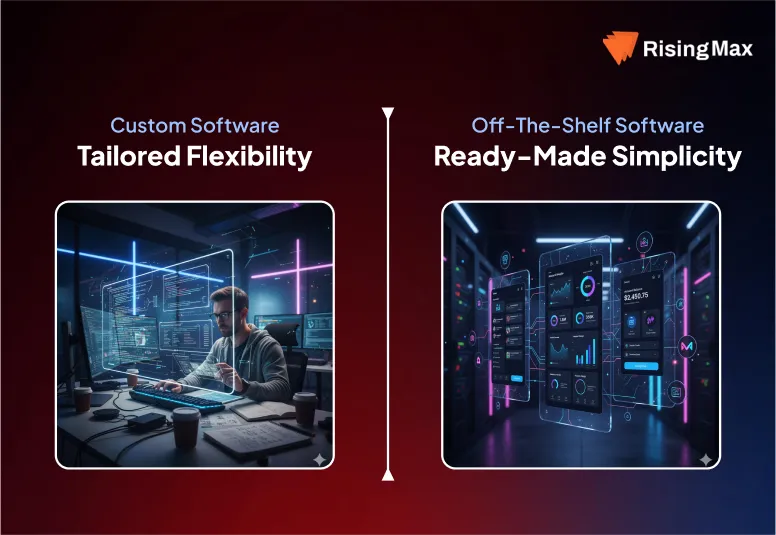
Now that you know the difference between the solutions, it is imperative that the former will have a high upfront cost and provide an integrated solution, while the latter will be a budget-friendly option.
Well, when it comes to comprehending the cost structure, we mainly divide the software on the basis of their complexity and the features that they provide.
Like any app, software can also be divided into three different categories based on its complexity –
- Tier 1 (MVP)
- Tier 2 (Medium Complexity)
- Tier 3 (Enterprise Grade)
1. Tier 1 (MVP)
MVPs are the most suitable option if you are in the initial phases or testing your idea in the market. MVPs have a lower cost, and let’s you have hands-on experience with the product.
This version includes only core features and keeps the UI/UX design minimalistic. Also, in terms of backend and database tech stack, it has a simpler architecture, although scalable, that is budget-friendly. Unlike top-tier software, this version usually targets a single platform (Android, iOS, Windows) or a web version.
Here’s a comparison of custom MVP software development costs in the USA, Europe, Australia –
| Solution Type | USA (Approx. MVP Cost) | Europe (Approx. MVP Cost) | Australia (Approx. MVP Cost) | Example (Custom / Off-the-Shelf) |
| Custom MVP | $7,000 – $15,000 | $5,500 – $12,000 | $6,000 – $13,000 | Internal dashboard for a small team. |
| Off-the-Shelf | $0 – $3,000 (first year) | $0 – $2,500 (first year) | $0 – $3,000 (first year) | Shopify/Carrd/Glide/Wix for marketplace landing, or Airtable + Zapier for simple workflows. |
*All prices are in USD.
2. Tier 2 (Medium Complexity)
Growing startups and SMEs often opt for tier 2 software. This version has more advanced features than the MVP and has a user-friendly interface. Unlike the MVP version, which had a minimalistic design, tier 2 software offers an optimized design to improve user interaction.
Software with medium complexity uses a tech stack that is reliable, scalable, and fast. The most preferred tech stack for building medium-complexity software is React, Node.js, Django, APIs, microservices, AWS/Azure hosting, and CI/CD pipelines.
Here’s a comparison of Tier 2 software development costs in the USA vs Europe vs Australia –
| Solution Type | USA (Approx. Cost) | Europe (Approx. Cost) | Australia (Approx. Cost) | Example (Custom / Off-the-Shelf) |
| Custom Software (Tier 2) | $15,000 – $30,000 | $12,000 – $25,000 | $13,000 – $27,000 | Custom example: SaaS dashboard or marketplace app (e.g., job portal, B2B CRM).
Tech: React + Node.js/Django, REST APIs, AWS hosting. |
| Off-the-Shelf (SaaS / Mid-Market Tools) | $2,000 – $20,000 (first year) | $1,500 – $18,000 (first year) | $1,800 – $19,000 (first year) | Off-the-shelf example: HubSpot (Sales/Service Hub), Zoho One, or Shopify Plus for advanced eCommerce. |
3. Enterprise Grade Software
This version is mostly preferred by funded startups or full-scale organizations. It has full compatibility across all platforms and has several advanced features, including AI and ML models. Key features of enterprise-grade software are –
- Compatibility across web, mobile, desktop, and IoT.
- High scalability and data security
- Advanced integrations (AI, ML, automation, APIs)
- Role-based access, compliance (GDPR, HIPAA, SOC 2)
- Dedicated cloud infrastructure and load balancing
This grade software even uses complex architecture and has custom-made frameworks. While developing enterprise-grade software, you may encounter technology such as Kubernetes, n8n, Docker, workflow automations, etc.
Here’s a comparison of enterprise-grade software development costs in the USA, Europe, Australia –
| Solution Type | USA (Approx. Cost) | Europe (Approx. Cost) | Australia (Approx. Cost) | Example (Custom / Off-the-Shelf) |
| Custom Software (Enterprise / Tier-3) | $60,000 – $250,000+ | $45,000 – $200,000+ | $50,000 – $220,000+ | Custom Example: A full-scale banking or fintech platform, enterprise-grade ERP/CRM for 1,000+ users, or healthcare management system. Tech Stack: Java / .NET, React, Node.js, Kubernetes, Docker, AI/ML modules, enterprise-cloud deployment. |
| Off-the-Shelf (Enterprise SaaS / ERP Suites) | $80,000 – $600,000+ | $60,000 – $550,000+ | $70,000 – $580,000+ | Off-the-Shelf Example: Salesforce Enterprise, SAP S/4HANA, Oracle NetSuite, or Microsoft Dynamics 365 configured for mid-to-large enterprises. Includes license, initial customization, and staff onboarding. |
Trivia: What’s the Difference between Software and App Development
Many people get confused between software and app development. In simpler terms,
Software is an umbrella term that is used to indicate a set of instructions or programs that direct computers what and how to function. E.g., Operating system, Antivirus software, Adobe Photoshop, etc.
While an App aims to target end-user satisfaction, it has a specific set of functions and performs well-defined tasks. E.g., WhatsApp, Calculator on your PC, etc.
Industry-Wise Custom Software Development Cost Comparison (USA, Europe, Australia)
Before we proceed any further, let us take a quick look at the software market standard and how the cost of key industry software varies among the top regions. These are technically accurate and benchmark-based cost comparisons for major industries across the USA, Europe, and Australia (2025–26 estimates).
| Software Type | USA (Avg. Cost Range) | Europe (Avg. Cost Range) | Australia (Avg. Cost Range) | Remarks |
| Healthcare Software | $90,000 – $300,000+ | $65,000 – $220,000+ | $75,000 – $250,000+ | Includes EHR/EMR, telemedicine, AI diagnostics, HIPAA/GDPR compliance. |
| FinTech / Banking Software | $100,000 – $400,000+ | $70,000 – $280,000+ | $85,000 – $320,000+ | Payment gateways, wealth management, trading systems, PCI DSS compliance. |
| CRM / ERP Software | $60,000 – $250,000+ | $45,000 – $180,000+ | $50,000 – $200,000+ | Multi-department automation, analytics dashboards, workflow automation. |
| E-commerce Software | $40,000 – $150,000+ | $30,000 – $110,000+ | $35,000 – $125,000+ | Marketplaces, multi-vendor stores, logistics & payment integrations. |
| EdTech Software | $50,000 – $180,000+ | $35,000 – $130,000+ | $40,000 – $150,000+ | LMS, virtual classrooms, AI-driven assessments, content analytics. |
| Logistics & Supply Chain Software | $70,000 – $220,000+ | $50,000 – $170,000+ | $60,000 – $190,000+ | Fleet tracking, warehouse management, route optimization. |
| Real Estate / PropTech Software | $55,000 – $180,000+ | $40,000 – $130,000+ | $45,000 – $150,000+ | Property listing portals, virtual tours, CRM, 3D visualization. |
| Travel & Hospitality Software | $50,000 – $160,000+ | $35,000 – $120,000+ | $40,000 – $140,000+ | Booking engines, loyalty systems, itinerary management. |
| Retail POS / Inventory Systems | $45,000 – $140,000+ | $30,000 – $100,000+ | $35,000 – $110,000+ | Multi-store POS, inventory sync, and analytics dashboards. |
| AI / ML-powered Software | $120,000 – $500,000+ | $80,000 – $350,000+ | $95,000 – $400,000+ | Predictive analytics, NLP, recommendation engines, RPA. |
| Blockchain / Web3 Solutions | $130,000 – $450,000+ | $85,000 – $320,000+ | $95,000 – $350,000+ | Smart contracts, DeFi apps, NFT marketplaces, DAOs. |
| Gaming / Entertainment Software | $80,000 – $300,000+ | $55,000 – $220,000+ | $70,000 – $250,000+ | Mobile/PC games, streaming apps, AR/VR integration. |
| Cybersecurity Platforms | $100,000 – $400,000+ | $75,000 – $280,000+ | $85,000 – $320,000+ | Threat detection, IAM systems, cloud security dashboards. |
| Manufacturing / Industrial IoT | $90,000 – $350,000+ | $65,000 – $250,000+ | $75,000 – $280,000+ | IoT-enabled monitoring, predictive maintenance, robotics integration. |
| Government / Public Sector | $150,000 – $500,000+ | $100,000 – $400,000+ | $120,000 – $450,000+ | Citizen portals, e-governance systems, compliance-heavy solutions. |
*All values are in USD and represent custom software development costs (not off-the-shelf).
Understanding the Build of Software: How Do You Make One?
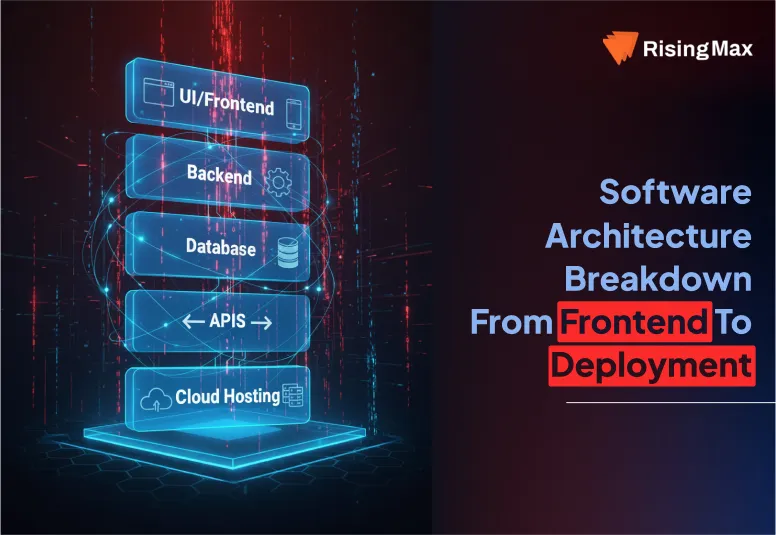
For a simpler understanding, the software build can be divided into these core layers:
- Market Research, Idea Validation, and Patent Research
- Designing
- Frontend (what users see)
- Backend (how your app functions)
- Database (data your software keeps)
- Third-party API integrations
- Final Deployment
Idea Validation and Patent Research
The very first process of building the software is aligning all your thoughts regarding the software and validating them with the help of market research. This step also includes detailed patent research, which, by the way, is one of the most important steps before you spend any budget on the development.
This early research helps you avoid any legal conflicts in the later stages or even post-deployment.
Designing
Next comes putting all your ideas on canvas, creating rough wireframes or low-fidelity sketches. As these wireframes are reviewed and tested, graphic designers then move to create prototypes or high-fidelity sketches using various tools such as Figma or Adobe XD.
Consider these final sketches as a fully interactive sample of your software with all the buttons and animations included.
Frontend
Frontend is the face of your app. User experience is one of the most critical factors for higher user retention. Usually, the developers focus on coding client-side logic and adding functionality to the prototypes or high-fidelity models created by designers. Frontend makes upto 30-40% of the total developmental work.
Developers in this stage focus on creating an efficient and responsive interface for the software. As per the global market, frontend developers usually cost around US$50 to US$250+, depending on their location and expertise.
Here’s an average estimation of the hourly rates of frontend developers:
| Region | Average Hourly Rate of Frontend Devs (USD) | Typical Range (USD/hr) |
| USA | $90/hr | $70 – $130/hr |
| Europe | $60/hr | $40 – $90/hr |
| Australia | $75/hr | $55 – $100/hr |
Backend
Your backend serves as a gateway between what users see on the screen and the data that’s stored in the database of your software. Backend handles server-side logic and defines specific relations to store your data.
This side of software uses programming languages like Python, Java, Node.js, and Ruby to build backend, along with different frameworks and APIs. Think of frameworks as pre-built modules to streamline the development process and APIs as a medium of communication among applications.
| Region | Average Hourly Rate (USD) | Typical Range (USD/hr) |
| USA | $105/hr | $80 – $150/hr |
| Europe | $70/hr | $50 – $110/hr |
| Australia | $85/hr | $65 – $120/hr |
Database
A database acts as the brain of your software. This layer handles data, business logic, and communication between different components of your software. It manages users, stores information, and executes the core functionality. Backend developers usually manage a database.
APIs & Integrations
APIs (Application Programming Interfaces) connect your software to other tools and services. Think of APIs as the talking language of the programs or various applications integrated into your software. APIs help in a great way to provide users with a seamless experience and add versatility to your project.
For example, you can integrate the Google Maps API, which allows you to have location-based analytics. Similarly, for smoother transaction or payment-related services, you may use regional authorized payment gateways such as Stripe, Braintree, etc.
Testing and QA Assurance
Once the software is built and ready to use, it then moves to testers. QA testers run automated and manual testing. The main goal here is to check the build of the software and test it in various environments to check its scalability, user handling capabilities, and its security parameters.
QA testers also check all the features of the software against the product requirement document (PRD), to ensure that all the features are being delivered as per the initial agreement with the client.
From the QA testers, you may also shift the software to the beta testing, where a limited number of users are given complete access to the software before launch. This stage usually results in minor tweaks in design and user experience.
Deployment
After the testing, the software is considered to be ready to launch. Depending on your business needs, you may host your software on the cloud or on traditional hosting service providers and then publish it on your targeted platforms.
Note that the role of developers does not end here. It is important that you provide regular security updates. Furthermore, while planning the budget, always keep an additional space of 10-15% for post-deployment maintenance.
How does understanding the software building process help you?
- Set realistic timelines and budgets.
- Avoid overcomplicating your first version.
- Communicate effectively with your development team.
- Plan for scalability without overpaying upfront.
Even subtle insights from experienced developers can guide you in choosing the right tech stack and identifying what’s critical for your software versus nice-to-have features, which can significantly affect your cost and timeline.
Key Cost Drivers: What Makes Software Development Expensive?
Now that you have a clear idea about the development process of a software, let us discuss the key factors that make up the cost of software development.
The key cost drivers can be categorized into three major categories, mainly:
- Efficiency of Workforce
- Software Scope (Length and Breadth of the Project)
- Timeframe
- Others
Efficiency of Workforce
Expertise & Skillset of Developers
| Developer Level | Typical Hourly Rate (USD) | Best Suited For | Advantages | Limitations |
| Junior Developer | $25 – $60/hr | Small tasks, MVPs, low-complexity apps | Budget-friendly, fast learners | Needs supervision, slower with complex logic |
| Mid-Level Developer | $50 – $100/hr | Medium complexity apps, integrations | Balance between cost and expertise | Moderate experience, limited architectural knowledge |
| Senior Developer / Architect | $90 – $180/hr | Large-scale, enterprise, AI/ML-based systems | Deep technical knowledge, better efficiency | Higher cost, limited availability |
| Specialized Expert (DevOps, AI/ML, Security) | $120 – $250+/hr | High-performance systems, automation, secure apps | Critical domain expertise | Premium pricing, niche skillset |
One of the main cost drivers is the skillset and expertise of the developers whom you are paying. Naturally, the skills, experience ,and productivity they are bringing to the table play a crucial role in determining the hourly rate of developers.
Hiring junior developers might help you save on the budget, but they often require proper guidance and a longer time to complete complex tasks, thus stretching the timeline to complete the project.
On the other hand, senior developers already have worked in several frameworks and are efficient in different programming languages. They probably already have solutions to the common issues that come up while building software from scratch.
Experienced devs ensure that you do not have to pay a premium in the later or post-deployment stages and keep you away from tech debt.
Size of Team
Here’s how the size of the team can impact the cost of your project –
| Team Size | Team Composition | Ideal For | Average Monthly Cost (USD)* | Delivery Speed | Coordination Complexity |
| Small Team (2–5) | 1 Frontend, 1 Backend, 1 QA, 1 PM | MVPs, prototypes | $8,000 – $20,000 | Moderate | Low |
| Medium Team (6–10) | 2–3 Devs, 1 QA, 1 UI/UX, 1 PM, 1 DevOps | Mid-size projects | $18,000 – $40,000 | Fast | Medium |
| Large Team (10–20+) | Dedicated squads for frontend, backend, QA, design, DevOps | Enterprise solutions | $40,000 – $120,000+ | Very Fast | High |
Another factor that directly influences the project timeline and cost is the size of the team. A small team might be highly expert but often struggles when it comes to agile development methodology to deliver projects quickly. Due to a limited workforce, they often struggle to run parallel tasks.
However, medium to large teams can handle even the most complex operations with ease. As a smarter option, you can partner with a top software development company that can provide you with an efficient team
Tools and Maintained Workflow
AI is now becoming an integral part of the workflow. By using automation tools, a modern development framework, and CI/CD pipelines, you can reduce the development time as well as the long-term costs.
Here’s an overview of how workflow setup can impact the development of your software:
| Workflow Setup | Example Tools / Stack | Time Efficiency | Long-term Cost Impact | Maintenance Needs |
| Manual Workflow | Traditional testing, manual deployment | Low | High (due to rework) | Frequent |
| Modern Workflow (CI/CD + Automation) | GitHub Actions, Jenkins, Docker, Kubernetes | High | Lower (fewer errors) | Moderate |
| AI-Augmented Workflow | GitHub Copilot, Codeium, automated QA bots | Very High | Lowest (faster builds, reduced human error) | Low |
Software Scope (Length and Breadth of the Project)
Features, third-party integrations, targeted platforms, and expected performance are some of the critical elements that directly influence the overall developmental cost.
| Feature Type | Example | Complexity Level | Cost Impact | Notes |
| Basic Features | Login, Profile Management | Low | Minimal | Ideal for MVPs |
| Advanced Integrations | APIs, Third-Party Tools | Medium | Moderate | Requires testing & licensing |
| Custom Features | AI, Automation, Real-Time Data | High | High | Increases time & budget |
| Enterprise-Level Systems | Multi-user dashboards, ERP, CRM | Very High | Very High | Demands strong backend & architecture |
Software that targets full-scale enterprises involves complex backend logic and complex frameworks, thus increasing the cost.
Similarly, API integrations, although they improve the user experience, come with additional post-launch costs, including annual licensing fees. Each integration requires testing, error handling, and maintenance planning.
Multi-platform Applications
If you are trying to provide a native experience, especially while building applications, you might need to refer to a specific framework such as Kotlin for Android, Swift for iOS, or React Native for cross-platform compatibility.
Here’s an estimated cost impact as per frameworks and targeted platform:
| Platform Type | Framework / Tech | Development Cost | Maintenance Cost | Best Use Case |
| Single Platform (Web or Mobile) | React / Swift / Kotlin | Low | Low | MVPs, internal tools |
| Cross-Platform | React Native / Flutter | Medium | Moderate | Startups, small to mid-size products |
| Native Multi-Platform | Kotlin (Android) + Swift (iOS) | High | High | Enterprise-grade applications |
| Hybrid Approach | Progressive Web Apps (PWA) | Medium | Low | Cost-efficient multiplatform MVPs |
The same goes for applications that are performance-heavy.
Therefore, it is often advised to choose frameworks that offer multiplatform support, especially when you are testing your idea or developing an MVP.
Security Compliance
Software that handle personal data or involve financial transactions may need to acquire additional compliance certifications. Applications designed for high concurrency, large datasets, or strict security standards (e.g., GDPR, HIPAA compliance) require additional architecture and testing, directly impacting the budget.
Timeframe
The project timeline plays a dual role,
- It affects resource allocation and,
- Determines whether the team can adopt standard development practices.
Short timelines require multiple teams working in parallel to provide efficient results with a quicker turnaround time. In this case, agile or iterative development models allow flexibility and incremental feature delivery, which can optimize cost.
Additionally, as discussed earlier, time allocated for bug fixes, updates, and performance optimization post-launch must be factored into the overall cost estimate.
Other Factors
Apart from these factors discussed above, there are additional factors that affect the cost of building the software.
For instance, hiring developers from a Tier 1 country like the USA will cost more, but it ensures project delivery quality and reduces post-launch costs.
Outsourcing to agencies versus in-house development can also influence cost based on overheads and efficiency.
Here’s the region-wise cost impact of different hiring models on software development cost:
| Hiring Model vs Region | America (USA & Canada) | Europe (Western, Southern & Eastern) | Australia |
| In-House Team | $70 – $180 / hr | $55 – $150 / hr | $90 – $160 / hr |
| Outsourced Agency | $75 – $200 / hr | $60 – $170 / hr | $100 – $180 / hr |
| Freelancers / Contractors | $45 – $130 / hr | $30 – $110 / hr | $70 – $130 / hr |
| Hybrid / Staff Augmentation | $55 – $160 / hr | $45 – $130 / hr | $85 – $150 / hr |
When it comes to hiring a team, choosing the right development partner also impacts the cost and delivery of the project. A professional software development company delivers higher code quality and builds scalable solutions suitable for startups or even enterprises. Although they might have a slightly higher development cost, but you can negotiate a better deal by opting for an agile development methodology such as Scrum or Kanban.
How Much Does Custom Software Development Cost in USA, Europe, Australia {Region-wise Cost Breakdown}
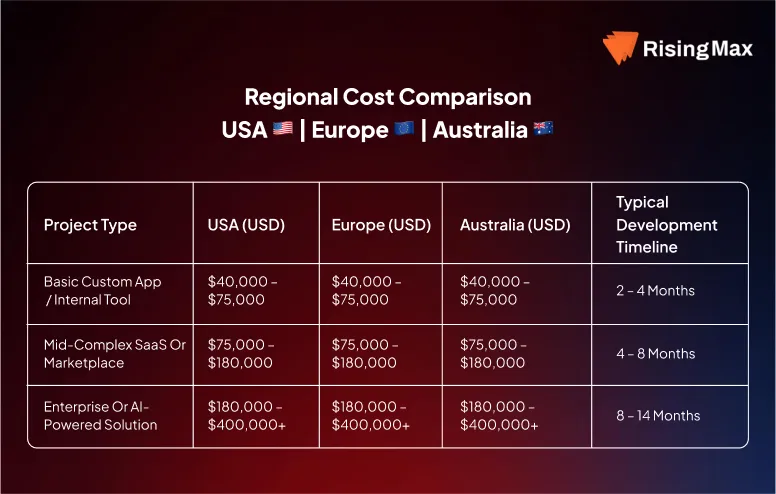
Development cost varies a lot depending on the geographical location. The USA is a hub for technology and has a supportive environment, especially for startups. Each country has a different market size and economic demand, hence the varying prices.
Let us understand the cost variation among these technological hub regions.
Software Development Cost in America
The American region sees the highest development cost, mainly because of these three factors:
- Highly skilled developers
- Quality and Expertise
- Highly competitive market
To build a custom software in the USA, it might cost you between $7,000 and $2,50,000+, depending on the length and breadth of its functionality.
Here’s a general overview of the average hourly developmental rates of software developers in the USA,
| Region | Country | Typical Hourly Rate (USD) |
| North America | United States (US) | $55 – $180 / hr |
| Canada | $45 – $95 / hr | |
| Latin / South America (LATAM) | Mexico | $30 – $80 / hr |
| Brazil | $30 – $75 / hr | |
| Argentina | $25 – $70 / hr | |
| Colombia | $25 – $60 / hr | |
| Chile | $30 – $65 / hr | |
| Peru | $20 – $55 / hr | |
| Uruguay | $30 – $70 / hr |
Custom Software Development Cost in Europe
In comparison to the tech market of America and Australia, Europe offers one of the most budget-friendly options.
The total cost to build a software in Europe might cost you between $5,500 and $200,000. Again, this is quite a broad range to mention, but the cost structure depends on the type of solution you are building.
Here’s an average hourly rate estimation of developers in various European countries,
| Region | Country | Typical Hourly Rate (USD) |
| Western Europe | United Kingdom | $60 – $120 / hr |
| Germany | $50 – $120 / hr | |
| France | $50 – $100 / hr | |
| Netherlands | $60 – $110 / hr | |
| Switzerland | $90 – $150+ / hr | |
| Nordic Countries (Sweden, Finland, Denmark) | $80 – $140 / hr | |
| Southern Europe | Spain | $35 – $75 / hr |
| Italy | $35 – $80 / hr | |
| Eastern Europe / Central & Eastern Europe (CEE) | Poland | $25 – $70 / hr |
| Romania | $30 – $65 / hr | |
| Ukraine | $25 – $65 / hr | |
| Bulgaria | $30 – $60 / hr | |
| Czech Republic | $30 – $90 / hr |
Software Development Cost in Australia
Australia is among the leading tech nations in the region. Due to a skilled workforce and mature software market, prices are generally high in the region when compared to European nations.
Australia provides a few budget-friendly options compared to the USA, thus acting as a balanced option to choose for software development.
Here’s an overview of the average hourly rates of software developers across Australia:
| Region | Major Cities Covered | Average Hourly Rate (USD) | Typical Project / Company Type |
| 1. Eastern Region (New South Wales & Victoria) | Sydney, Melbourne | $85 – $140 / hr | Enterprise software, SaaS, fintech, government projects |
| 2. Northern Region (Queensland & Northern Territory) | Brisbane, Darwin | $70 – $120 / hr | Cloud platforms, logistics, mid-size custom solutions |
| 3. Southern & Central Region (South Australia & ACT) | Adelaide, Canberra | $75 – $130 / hr | GovTech, defense, AI, research platforms |
| 4. Western Region (Western Australia) | Perth | $80 – $125 / hr | Mining, energy, and industrial software systems |
Typical Development Cost and Time Required for Custom Software Worldwide
It is obvious that the longer the time it takes to build software, the higher the cost.
| Project Type | USA (USD) | Europe (USD) | Australia (USD) | Typical Development Timeline |
| Basic Custom App / Internal Tool | $40,000 – $75,000 | $25,000 – $55,000 | $30,000 – $55,000 | 2 – 4 months |
| Mid-Complex SaaS or Marketplace | $75,000 – $180,000 | $55,000 – $120,000 | $55,000 – $130,000 | 4 – 8 months |
| Enterprise or AI-Powered Solution | $180,000 – $400,000+ | $120,000 – $300,000+ | $130,000 – $320,000+ | 8 – 14 months |
Evolving Trends with Agentic AI in Software Development 2026 – Analysis and Cost Implications
As we are moving towards 2026, development approaches in the software industry are evolving faster than ever, with AI leading the trend. Users are already leveraging Agentic AI in their workflows. But as a startup founder or investor,
Have you integrated Agentic AI into your business?
In 2025-26, agentic AI can now manage a number of developmental tasks such as automated DevOps pipelines, self-debugging code systems, and even context-aware automations — increasing operational efficiency by 30-50%.
For further reading about agentic AI trends, you may refer to 8 AI Agent Trends For 2026!
Role of Agentic AI in Software Development
These AI agents shape the automation task into an autonomous task with goal-driven reasoning, planning, and execution of tasks independently.
Unlike traditional AI models that require human prompting, Agentic AI systems use multi-agent orchestration, reasoning frameworks (like LangGraph, CrewAI, or AutoGPT), and continuous feedback loops to perform complex operations with minimal supervision.
Illustrations of How Agentic AI is Applied in Software Development Today
| Industry | Example Application | Function |
| Healthcare | Patient triage and scheduling agents | Reduce manual coordination and improve diagnostic efficiency |
| FinTech | Autonomous compliance and fraud detection | Real-time transaction monitoring |
| SaaS / CRM | Self-optimizing sales agents | Predictive lead management and automated outreach |
| E-commerce | Agent-based product recommendations | Dynamic personalization and upselling |
| Enterprise IT | Self-healing infrastructure | Autonomous bug detection and patch deployment |
Cost Implications of Agentic AI on Software Development Cost in 2026
Building agentic AI is much complex than traditional artificial intelligence and requires a high level of expertise, thus increasing the cost by two or threefold.
Here are market estimations of its implications on software development (development and integration):
| Region | Average Cost Range (USD) | Notes |
| USA | $150,000 – $600,000+ | Advanced integrations, high security, multi-agent orchestration |
| Europe | $100,000 – $450,000+ | Lower dev rates, strong AI expertise (CEE region) |
| Australia | $120,000 – $500,000+ | Balanced cost-quality ratio, growing AI talent ecosystem |
Wrap Up
Custom software is often developed to provide a seamless experience and to suit specific business needs. Although the upfront development cost of custom software is often high, when analyzed in terms of long-term gains, it proves to be the most reliable option.
Custom software development costs in the USA, Europe, and Australia range between USD 7,000 and USD 300,000. The cost mainly depends on the software scope, the expertise of developers, the location of the hiring team, and the chosen tech stack.
When it comes to regional cost comparison and building software, the USA has the most supportive environment, with a robust tech ecosystem, but charges premium rates compared to Australia or Europe. The average hourly development rates of software developers can be summarized as:
- USA: $55–$180/hr (avg.)
- Europe: $40–$120/hr
- Australia: $65–$130/hr
By applying optimized strategies that we discussed in the latter part of this article, you can make your project budget-friendly without compromising the quality.
FAQs
Q1. How much does custom software development cost in 2025–26 across the USA, Europe, and Australia?
Ans. The average cost of custom software development in 2025–26 in the USA, Europe, and Australia is –
- USA – $7,000 to $250,000+
- Europe – $5,500 to $200,000+
- Australia – $6,000 to $220,000+
Q2. Why is software development more expensive in the USA than in Europe or Australia?
Ans. Software development costs are higher in the USA due to:
- Higher developer wages and talent premiums.
- Strict IP, data protection, and compliance laws (HIPAA, SOC 2, GDPR).
- Advanced infrastructure and enterprise-grade standards.
In contrast:
- Europe, especially Eastern Europe, delivers similar quality at 20–40% lower hourly rates.
- Australia sits mid-range, offering a balance of skilled developers and cost efficiency.
Q3. Which region offers the best ROI for custom software development in 2025–26?
Ans. Europe (Central and Eastern Europe) offers the best ROI in 2025–26:
- Cost savings of 35–50% compared to the U.S.
- Highly skilled developers with strong English proficiency
- Efficient development without compromising quality
For enterprise-grade reliability, Australia and North America remain premium options despite higher costs.
Q4. What factors influence the total custom software development cost?
Ans. Key factors affecting software development cost include:
- Scope & Feature Complexity: Number of modules, integrations, analytics
- Tech Stack & Infrastructure: React, Node.js, .NET, Kubernetes, AWS/Azure
- Team Composition: Junior vs. senior developers, QA, DevOps
- Security & Compliance: GDPR, HIPAA, PCI DSS
- Timeline & Workflow: Manual vs automated CI/CD pipelines
Each factor can swing budgets by 30–70%, depending on early planning decisions.
Q5. Is it cheaper to hire freelancers, agencies, or an in-house team for custom software development?
Ans. Cost depends on project size, complexity, and timeline:
| Team Type | Hourly Rate | Best For |
| Freelancers | $30–$90/hr | MVPs or short-term modules |
| Agencies | $60–$170/hr | Full lifecycle delivery |
| In-house | $90–$180/hr | Long-term proprietary systems |
Hybrid approach (core team + outsourced modules) often delivers maximum efficiency and cost savings.
Q6. How long does it take to develop custom software?
Ans. Development timelines vary by complexity:
| Software Type | Typical Duration |
| Basic MVP / Internal Tool | 2 – 4 months |
| Mid-Complex SaaS / Marketplace | 4 – 8 months |
| Enterprise / AI-Driven Solution | 8 – 14 months |
Faster delivery requires larger teams or parallel sprints, which can increase costs proportionally.
Q7. What is the difference between custom and off-the-shelf software in terms of cost and scalability?
Ans.
- Custom Software:
- Higher upfront cost ($15K–$250K+)
- Full ownership and tailored scalability
- Long-term ROI for unique workflows
- Off-the-Shelf Software:
- Lower initial cost ($0–$3K/year)
- Subscription-based with limited customization
- Recurring costs and limited scalability
Custom software is ideal for businesses needing unique workflows, data control, and future scalability.
Q8. How can I reduce or optimize my custom software development budget?
Ans. Cost optimization strategies include:
- Start with an MVP to validate ideas.
- Outsource selectively to cost-efficient regions (Europe, APAC).
- Use open-source frameworks (React, Django, Node.js).
- Automate testing & CI/CD to minimize QA costs.
- Implement cloud cost optimization (AWS Budgets, Azure Cost Management).
These strategies can reduce costs by 25–40% without compromising quality.
Q9. How do frontend, backend, and database development costs differ by region?
Ans.
| Role | USA | Europe | Australia |
| Frontend Developer | $70–$130/hr | $40–$90/hr | $55–$100/hr |
| Backend Developer | $80–$150/hr | $50–$110/hr | $65–$120/hr |
| Database Engineer | +10–15% senior premium | +10–15% senior premium | +10–15% senior premium |
Backend and database typically account for 60–70% of total development costs.
Q10. How can understanding the software development process help manage costs better?
Ans. Knowing each phase (Ideation, Design, Frontend, Backend, QA, Deployment) helps you:
- Set accurate budgets and realistic timelines
- Identify which features to prioritize in your MVP
- Avoid scope creep and technical debt
- Communicate effectively with the team
A well-documented workflow ensures you pay only for necessary features and avoid costly rework.
Q11. What is the average software development cost per hour in the USA, Europe, and Australia in 2026?
Ans.
- USA: $60–$180/hr — premium skillsets, advanced infrastructure
- Europe: $40–$120/hr — high quality at cost-efficient rates
- Australia: $65–$130/hr — competitive rates with enterprise-grade quality
Europe remains the most cost-efficient region for high-quality software development.
Q12. Is custom software development worth the investment for SMEs?
Ans. Yes — custom software provides long-term savings for SMEs by:
- Automating operations and reducing manual effort
- Improving scalability and flexibility
- Eliminating recurring subscription fees from off-the-shelf solutions
- Offering full ownership and competitive differentiation
Q13. Which country is best for outsourcing software development in 2026?
Ans. Poland, Romania, and Ukraine lead outsourcing in 2026:
- Affordable rates: $25–$70/hr
- High technical expertise and Western-level quality
- Cost savings of up to 50% vs. U.S. or Australia
Ideal for startups and mid-sized firms balancing quality and budget.
Q14. How much does it cost to build enterprise software in Australia?
Ans. Enterprise-grade software in Australia typically costs $120,000–$220,000+, depending on:
- Project size and feature complexity
- Advanced integrations (AI, blockchain, analytics)
- Compliance and regulatory requirements
Average hourly rates in major cities (Sydney, Melbourne) are $85–$140/hr.
Q15. Why do software development costs vary so much by region?
Ans. Regional cost differences stem from:
- Labor rates: U.S. wages are highest, Eastern Europe is cost-efficient
- Living standards & taxes affecting operational costs
- Infrastructure & compliance costs: Australia and the U.S. maintain higher enterprise standards
Europe provides the best balance of quality and cost, while Australia sits mid-range, and the U.S. remains premium.


